Getting bletted
This week: Alarm bells ringing: What to do when it rains; Getting bletted; Orchard delights; Hoe, hoe, hoe; ;
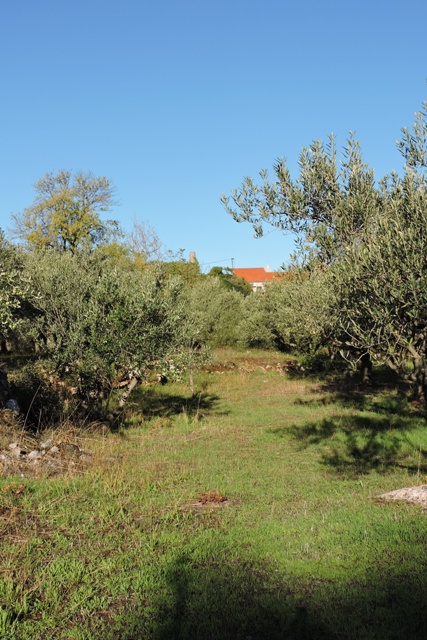
It is still not especially cold, more that I would describe the mornings as “cool”.
When I downloaded the data from my weather station today (Saturday) I found that from having above average temperatures in September we are now below the five year average.

It was announced this week that globally, September has been the warmest ever recorded.
The rainfall we have had this past fortnight has been extremely variable. I tracked one thunderstorm on Thursday that was coming from the SSW, but it passed to the east.
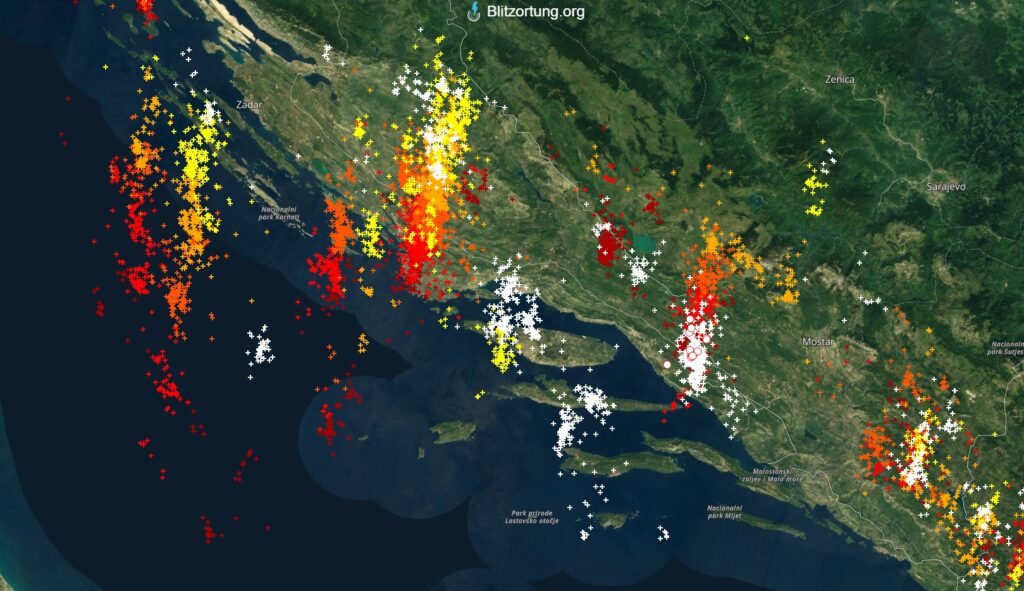
We received some rain, but nothing like the amount that was received even 6 kilometers away in Jelsa.
The rain is early this year too, with the volume being up for this early in the rainy season but we are still at only half the average total for this time of year.
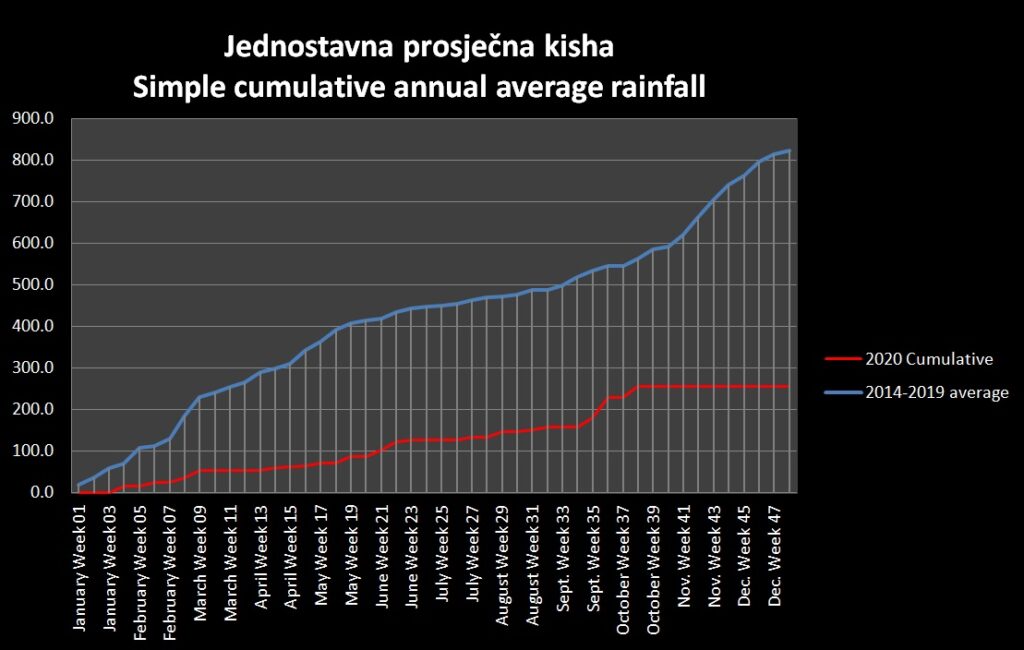
Whatever the cause, and that question is subject to much debate, climate change is real and is happening.
Alarm bells ringing
Sometimes alarm bells don’t ring, they perhaps just vibrate slighlty.
When I ordered the corrosion and limescale inhibitor for the wood stove central heating system last week, I was a little surprised that the plumber’s merchants hadn’t heard of it and had to order it specially from Split. The alarm bell in my head vibrated a bit.
I put it down to the fact that few people on the island have central heating with the water heated by solid fuel.
The plumbers merchants phoned me in the middle of a storm on Thursday to say “We’ve got your engine lubricant in stock.”
The bell started to ring. I said to the guy, “No, its corrosion inhibitor,”
“Yes, yes.” He replied, “That’s what it is.” I put it down to the language barrier and the bell stopped.
When I collected the product on Friday, I was immediately surprised by it’s size. It is a five litre container. I had expected a one litre, because you dilute it 1:25. Without prompting the sales assistant said, “We ordered the small one. It was either five or ten litres.”
When I read the label and saw that it referred to dilution rates of 1:2 and no dilution for temperatures below -20 C. I said I thought it was the wrong stuff. I pointed out the label said “Antifriz Koncentrat ” which anyone with an understanding of English could read as Antifreeze Concentrate. Fluency in Croatian is not required.
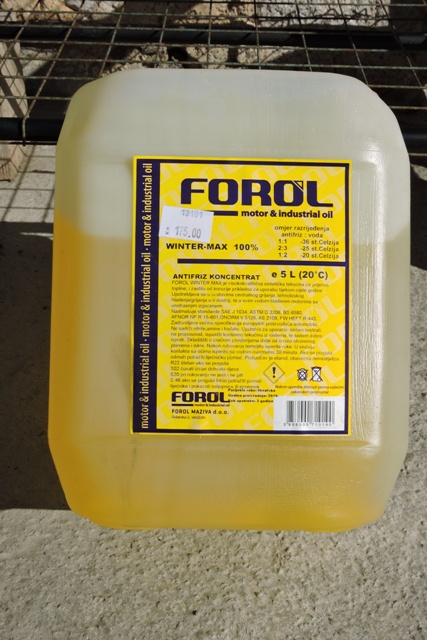
People were summoned and the very small print on the label was read and translated. It allegedly said “suitable for central heating” (perhaps to prevent freezing?). I was not convinced and asked if I could return it if it was wrong. They said yes.
Coming home and checking on line, the company website (in Croatian) says they make oils and lubricants for vehicles and industrial machinery. The page for the product does not mention central heating, but does talk about engine coolant.
I suspect it is an antifreeze and has nothing what so ever to do with central heating. I have sent an email to the company to ask, so I can be sure, but I suspect it is another of those “totally lost in translation” issues I come up against every so often. I’ll report next week on what happens next…
What to do when it rains
Somewhere inside me lurks a book. In fact there are probably several books on different subjects.
I have been doing research for a couple of years on Saints. That is Triumph Saints (Stops Anything In No Time), also the enigmatic Rickman Police Métisse.
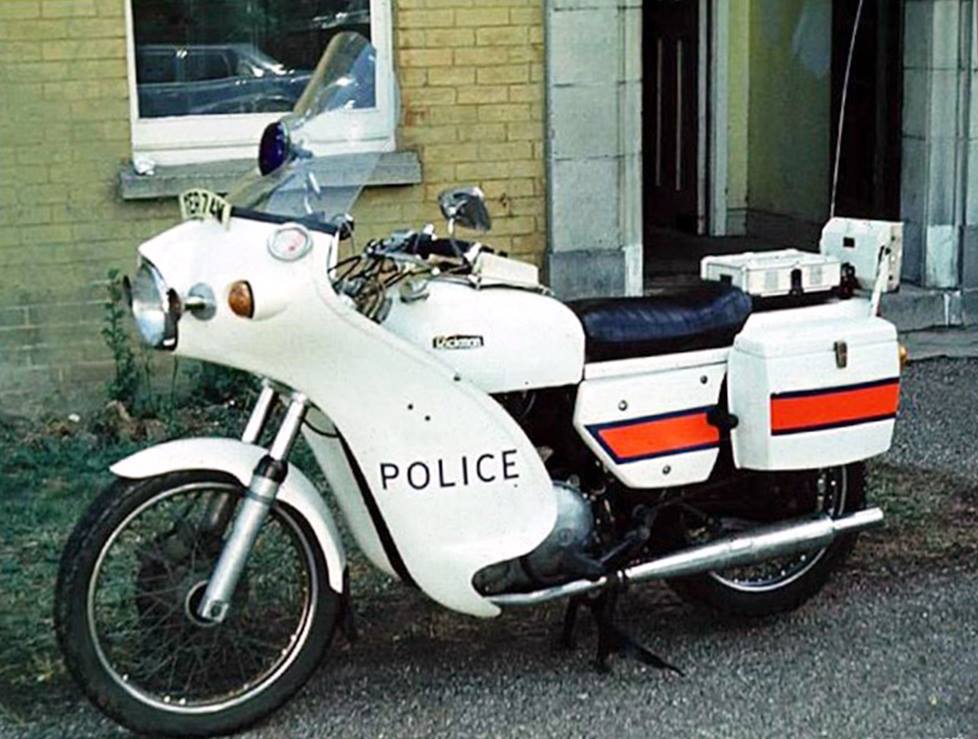
Just 30 Mk1’s and 50 Mk2’s were made by racing champions Derek and Don Rickman. (I own examples of both)
But of more interest to a wider public and perhaps a little easier to write about is walks around Dol.
Most mornings (weather permitting) I go for a walk through the olive groves. I am always joined by one or more of the felines. On Tuesday this week, two of the kittens tagged along, so with three adults I had five felines rushing around, climbing trees and chasing grasshoppers, leaves and everything else that moved.

Following one of the kittens, I discovered a path that I have never seen before, sloping down and away from the olives, through a thicket. It prompted me to dig out my large scale map of Dol to see where it leads. It’s not shown.
In a normal year, we have a lot of visitors at the various rental properties in the village. A few years ago I produced a map of some walks that visitors could take but I decided that I really should document the walks too, with points of interest. A paper map requires the ability to read it!
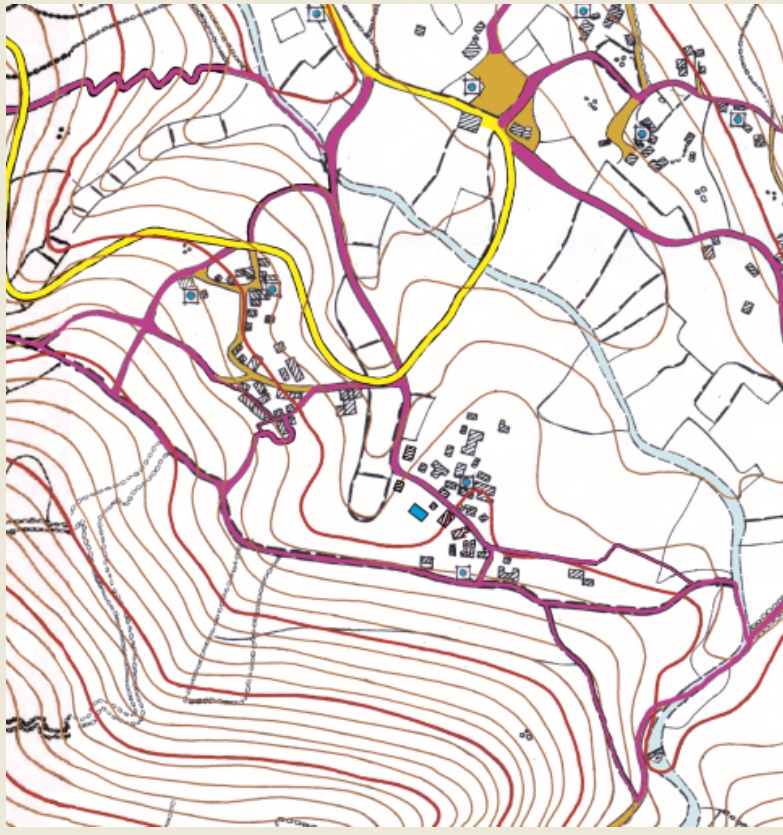
Maybe I could even produce a small book with the walks, together with some photographs.
There are a number of things missing in this part of the world, which are taken for granted everywhere else.
For example there is no “Yellow Pages” or trade directory, so you have no idea who does what, with what and for whom, unless you ask a friend or neighbour.
We also have no published street map. Streets have names, but also the different parts of the village have local names. My Dol house is in the “marakanec” area, confirming a link with Morocco.
But also it is knows as Queen Teuta‘s promenade”, because the queen of the ancient Illyrian tribe, who once upon a time ruled in these parts, reputedly had a palace on the hill immediately behind my home.
Walking around the village you see innumerable small shrines, like the one on my gate, each with a history.
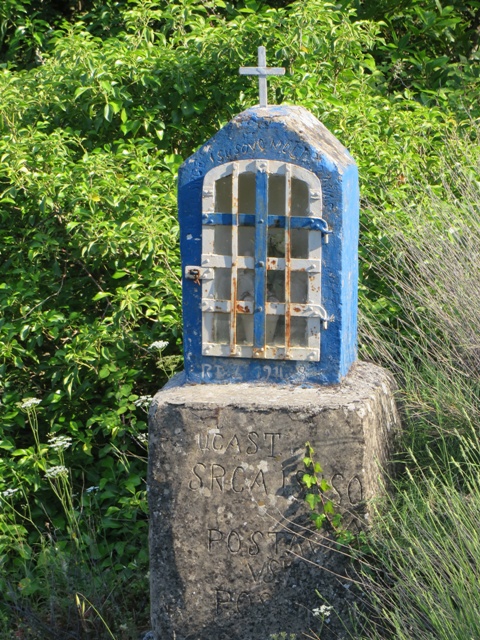
But none of this is recorded.
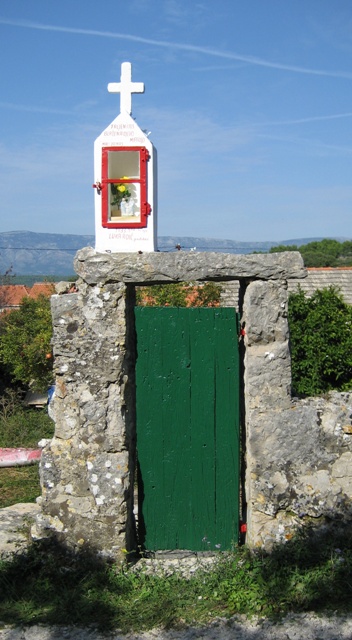
I have researched mine. The inscription reads:
Faljenisus Felicitations
Blaženadjevo Marija Blessed Virgin Mary
Moli Zanas Pray for us
1933.god.na 15/3 15th March 1933
Luka Roić Postolor Luka Roić Shoemaker
Most houses, and sadly mine seems to be the exception, have the date of building, sometimes with the name of the owner.
But for the casual walker, none of this is explained or available anywhere.
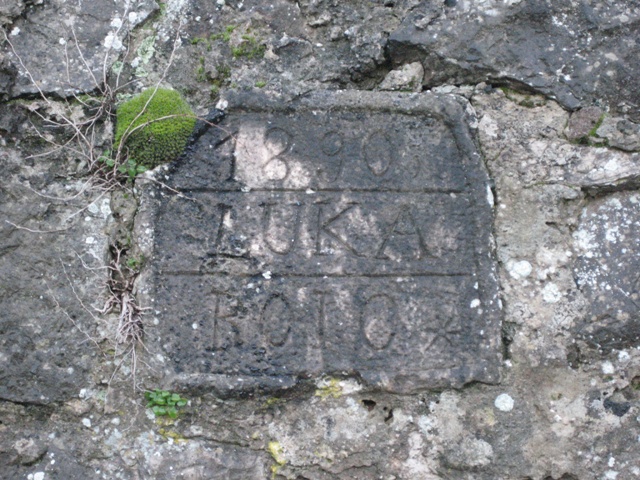
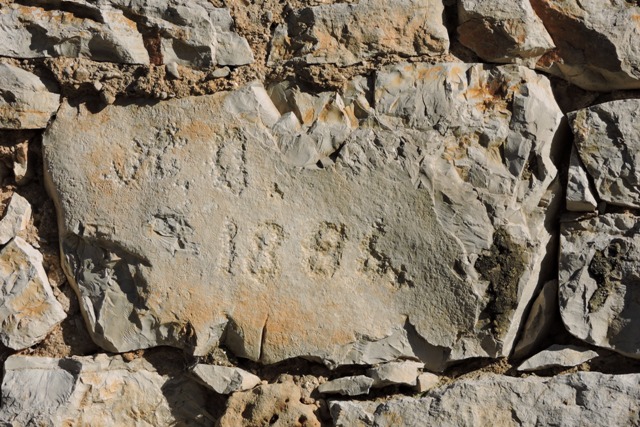
There are Greek and Roman lookout posts on the hilltops which surround the village, but paths to get there are not marked.

Any serious writing needs a plan, so on a very wet Monday I started by simply drawing a map of the streets.
The next job will be to add some names and then to walk the ground and record in detail what I can see.
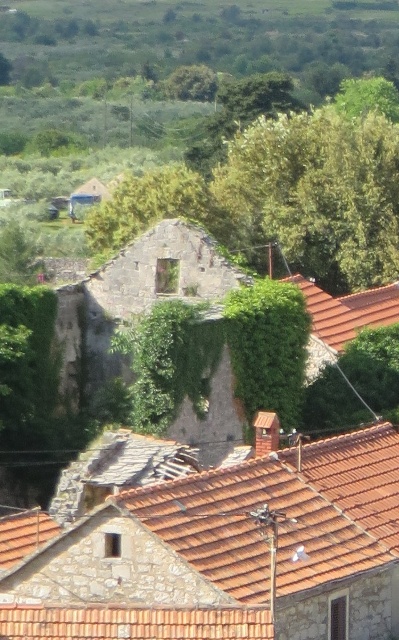
There are ruins to explore and examine for information. You need to look both up and down to find date stones.
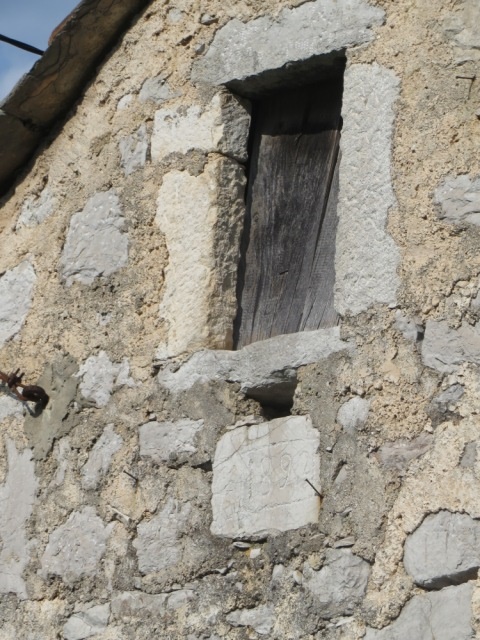
It would be nice to produce a downloadable gpx file of the walks. This is one I prepared earlier – actually three years ago.

GPX works with the mapping apps you have on your smart devices, although I still feel there is a need for good, old fashioned paper maps and a guide book too.
Watch this space…
Getting bletted
Tuesday was the best day of the week by far. Warm autumn sun shone down all day from a clear azure sky.
I started pruning plants and shrubs, giving them their autumnal haircut. I began with a big Rosemary bush near the kitchen. It is in flower, the lavendar coloured blooms shone in the sunshine and it has a lovely, fresh scent.
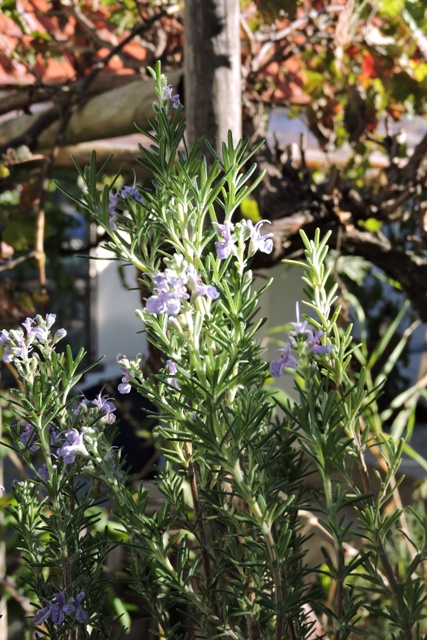
Also in flower at the moment is my Bird of Paradise flower, Streletzia reginae . It is in a very large tub on the terrace. This is because I think I am right on the limit for keeping the plant outside.
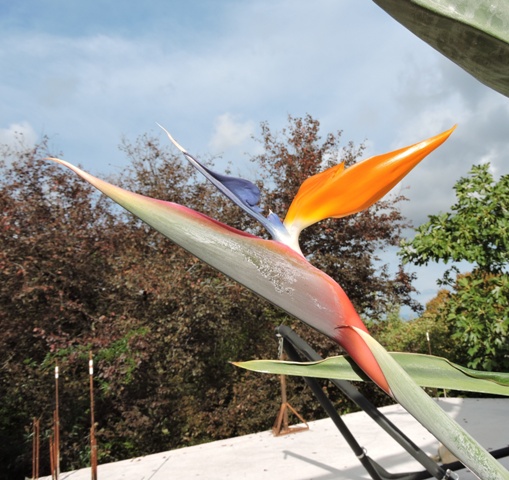
Being in a pot I can move it under cover, even inside, if low temperatures are threatened.
Streletzia are sub-tropical plants, which thrive in a Mediterranean climate. It also grows well in dry conditions, but if kept moist, it will produce more flowers.
It is unusual because the flowers are produced over the winter, so with several more flower spikes emerging, I hope I will have flowers until at least Christmas.
The Medlars, Mespilus germanica, will be ready for harvesting in mid-winter.
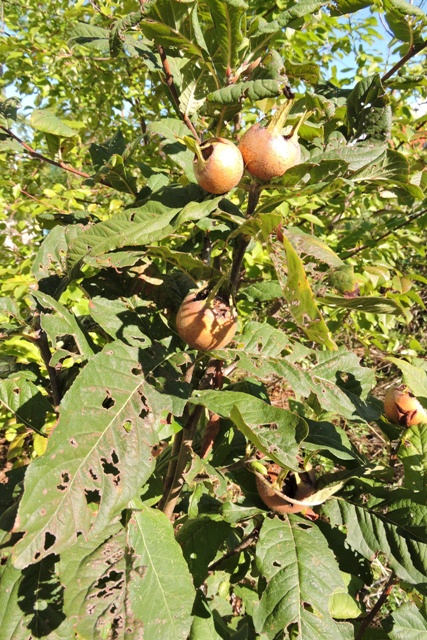
This is a small, slow growing tree that I planted as a bit of a trial. It has barely developed beyond being a shrub. This year it has a number of fruits, but they need “bletting” before they can be eaten.
Bletting is the process of the fruit being softened and ripened by cold weather. On the tree they appear ripe now, but it is not until the skin goes brown and wrinkled that they are ready.
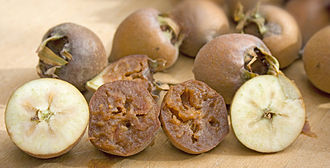
Once ripe they can be used for sauces, made into a curd or eaten as a dessert. They have a flavour of sweet apples.
Orchard delights
Checking the Top Orchard last week I was pleased to see that there were fruit on my Persimmon tree.
I planted it five years ago, but this is the first year it has borne fruit.
Persimmons are another fruit which remain on the tree until soft and ripe. This is usually well after the leaf fall in Autumn.
I was disappointed this week to see that two of the largest fruits have been attacked by something.
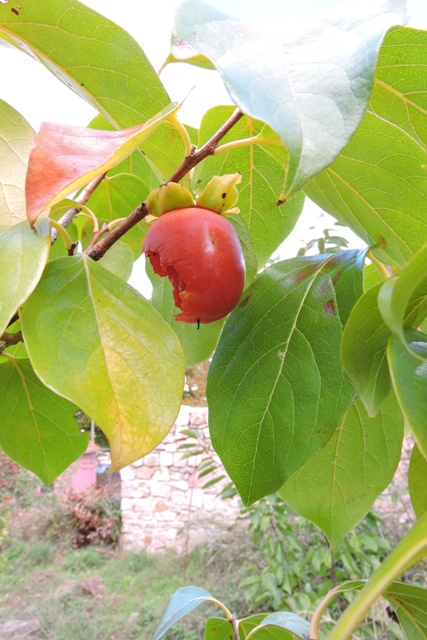
Feeling the other fruits, several were soft so I cut their stems with secateurs and brought them in to prevent further attack.
Cutting one open, the flesh was dense and sweet. Instead of making it into a smoothie, I ate it whole as you would an apple.
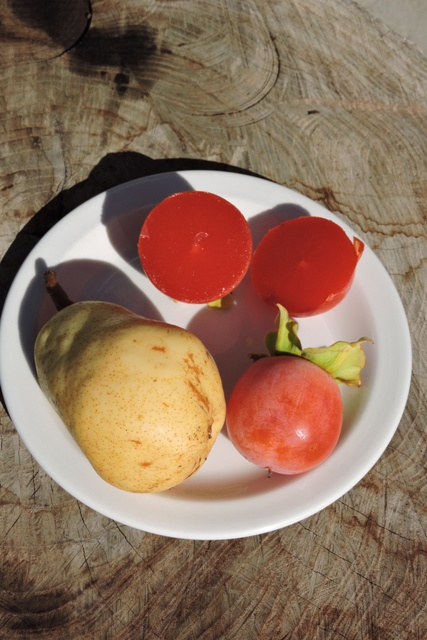
There is a very old tree on the floodplain in the village, near St. Anne’s Church, which is covered in dozens of fruit every winter. They never seem to be attacked!
No one picks them and they just fall off going to rot on the ground.
I will have to keep my eye on my fruit, to make sure that as they ripen I pick them and they do not just become food for an unknown predator.
There are still lots of butterflies about. The Red Admiral is a year round resident, flying on sunny days throughout the year. By the look of this example it is a recent hatching because there is no damage to the wings.
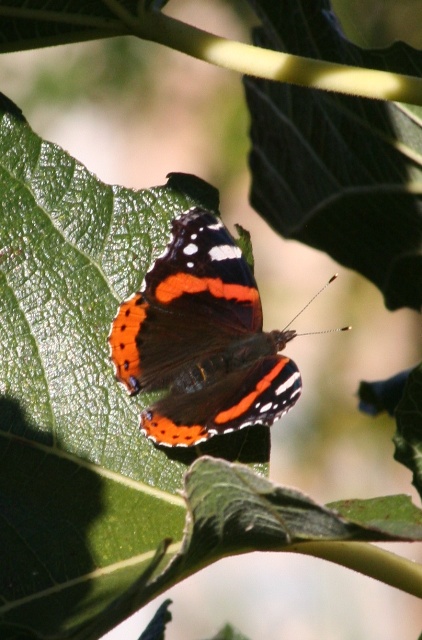
Grasshoppers abound everywhere, but one of the more unusual ones that I see occasionally in the orchard is this Cone Headed Grasshopper, Acrida ungarica.
They are locally common but are classed in the European Red List as threatened. I only saw the one this week.
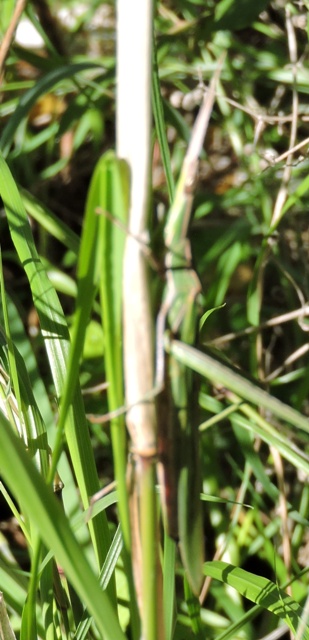
There are no straight lines in nature, so when I saw a very smooth line in a hedge at the bottom of the orchard, I went a bit closer to look.
As I got closer I could see exactly what it was. Although I didn’t recognise the species, here was one of our local reptiles, sunning itself in the morning sunshine.
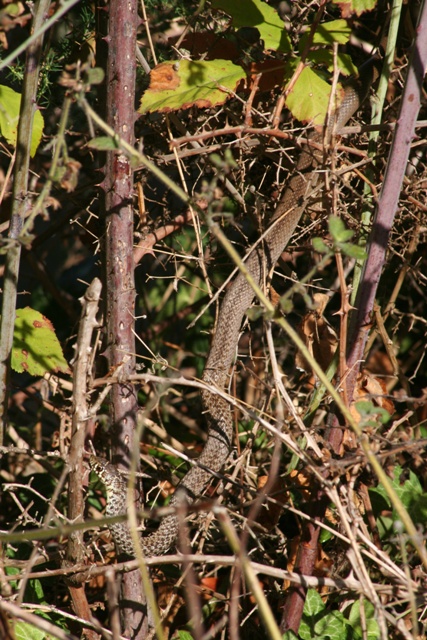
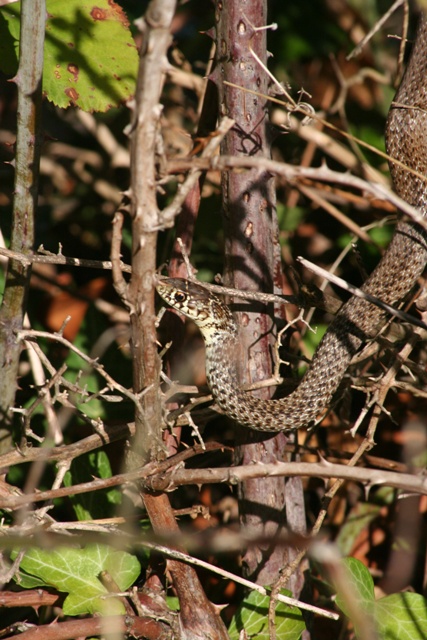
Very occasionally I see a snake, usually far more afraid of me than I of it, retreating at great speed back into cover. I do find their shed skins quite frequently.
We have one venomous snake, the Horned Viper, known as the “Poscock” on the island, which if bitten by it, will cause problems for a human.
Some of the other local species, whilst having venom fangs at the back of the throat, are only likely to bite you if you put a finger into their mouth.
Well that is what my book says, but I am not about to try and see if that is accurate!
After taking some photos, I went back to the house to get my camera with the long lens. When I returned, it had gone. I have still not identified the species.
Hoe, hoe, hoe
I was getting on wonderfully on Wednesday, that is until it started raining!
The weather forecast was for showers from late on Wednesday with a day of rain on Thursday. This I saw as an opportunity to prepare the ground in the drupe orchard and sow some winter Lucerne.
Last autumn i had hoped to plant some, but the weather conditions were not right. In 2017 I planted Lucerne in between the rows of Cordon apples and pear trees and this “Green Manure” crop has stopped weeds growing ever since.
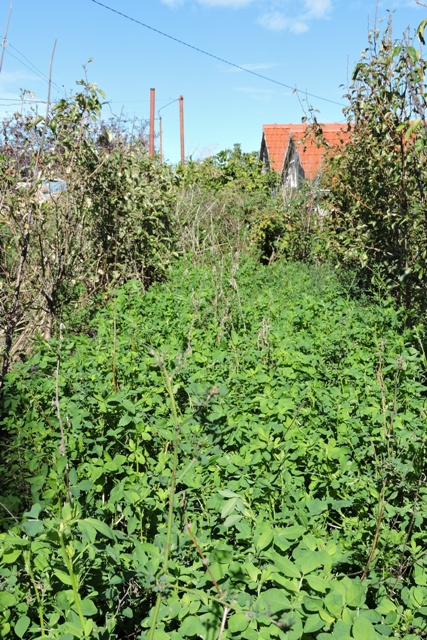
There needs to still be warmth in the soil and sun, but also moisture to get the plants to germinate and take root before the cold of winter, such as we get, arrives in six to eight weeks time.
After doing a few jobs in the morning followed by an early lunch, I started with a Dutch hoe to uproot the weedlings that have appeared since the first rains a couple of weeks ago.
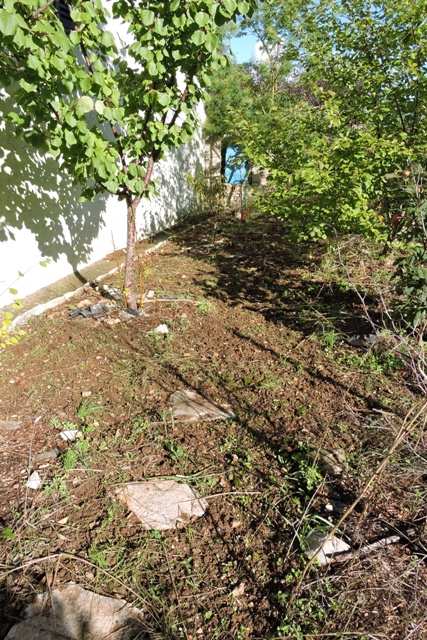
Then at 2pm, the rain started. I had managed to hoe between the apricots and peach trees and was half way along one of the 20 meter aisles that run between the rows of trees when the rain started.
It was a sharp, heavy shower, too much to work in, even with a waterproof, so I retreated inside to wait for it to stop. An hour later I was outside again and just finished the area I had intended to sow before another shower arrived.
With the rain and my heavy clay soil there was lot of Hoe, hoe, hoe and very little Ho, ho, ho!
The Dutch hoe kept clogging with weed roots and I had to clear the blade with a sharp stone. When I finished, this is what the hoe blade looked like.
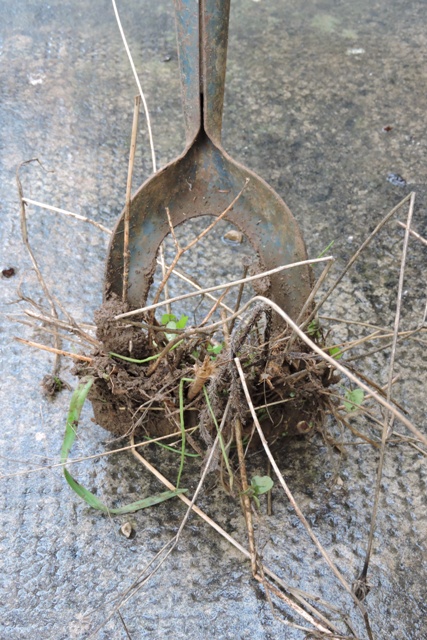
The next task was to sow 2.5 gms of seed per metre². I increased the amount a little, given the time of year I am sowing.
Finally I ran over the surface of the soil with a tine rake, lightly covering the seed and waiting for the forecast rain to wash the seed in and to start the germination process.
After a couple of days of light rain, with a reasonable total of 11mm since palnting, the seeds have been well washed into the soil and are no longer visible to the naked eye.
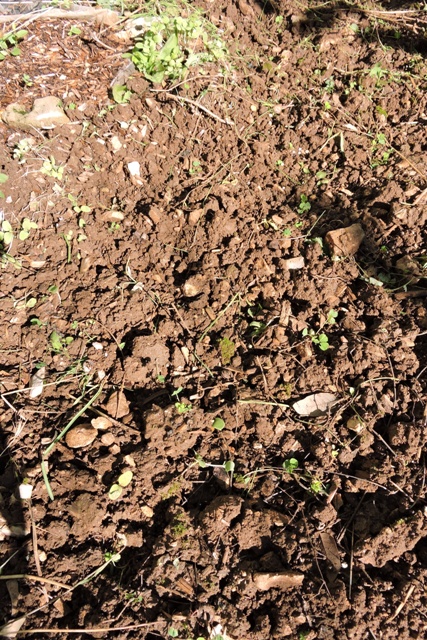
I will be interested to see how quickly the seeds germinate at this time of year. NCG
4 Responses
John Bailey.
You are lucky Norman. I haven’t set eyes on any Red Admiral butterfly’s this summer.
Michael
Norman,
what you need to solve your hoeing problem is the Sneeboer Royal Dutch hoe (https://www.sneeboer.com/en/royal-dutch-hoe-125-cm.html) which has a double sided serrated blade. It’s wonderful and rips through anything and everything, while the very long handle allows you to work in a relaxed upright position. Expensive but strongly recommended/
Tony Griggs
We are experiencing http://www.bom.gov.au/climate/updates/articles/a020.shtml here in the Southern Hemisphere Norman. Very wet spring in southern Australia so far. That fluid sounds like the wrong type! Enjoy what’s remaining of your autumn.
Lynn Woolsey
Norman, yes. You need to write those books!